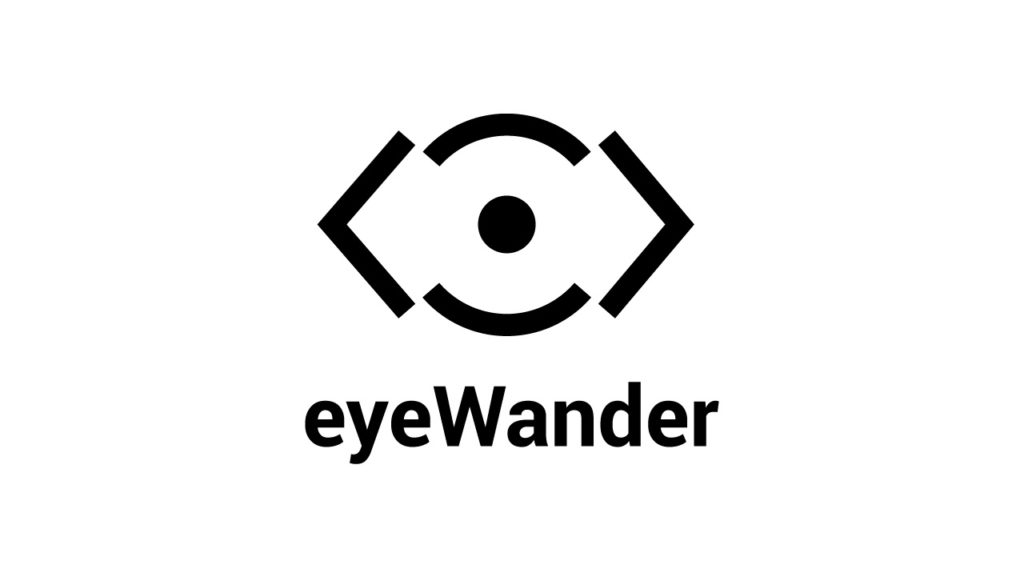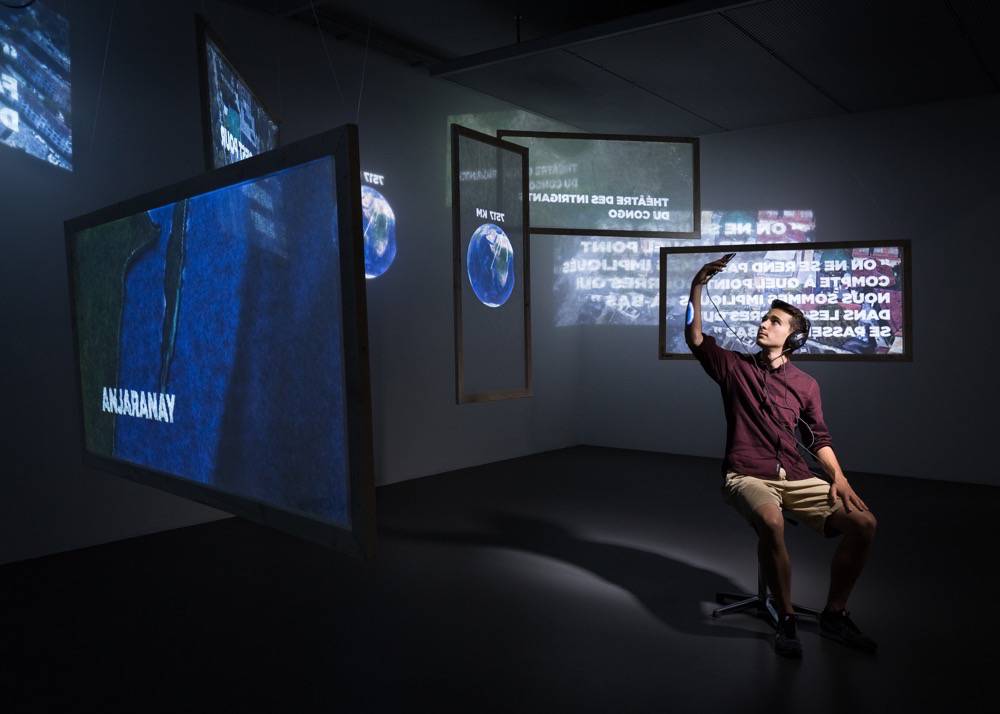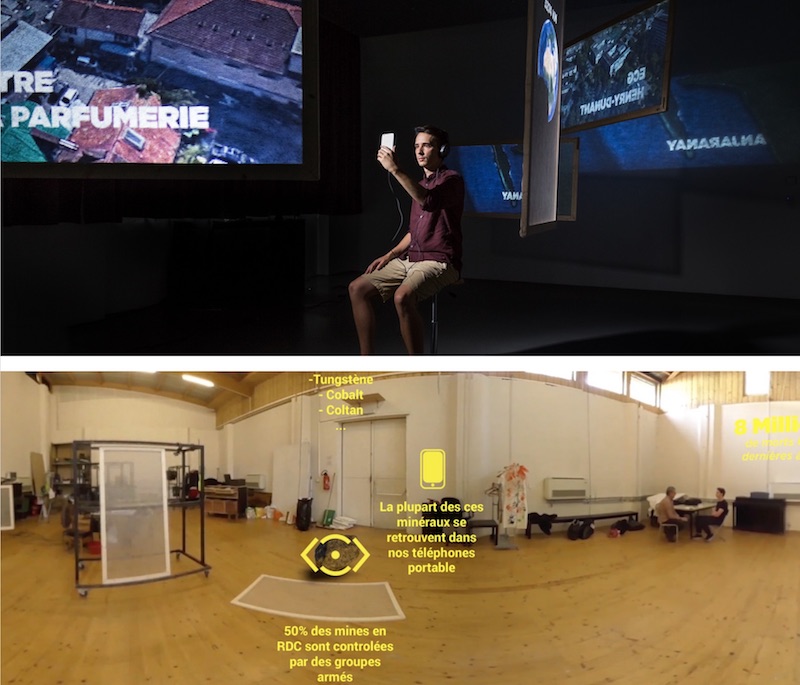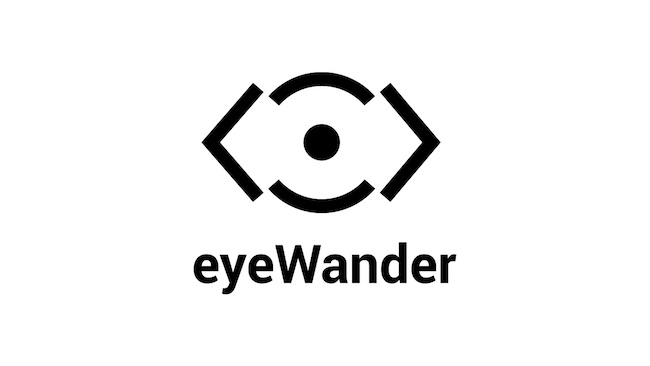Based on the interactive 360° video installation project « Fenêtres Associatives » made by Vincent de Vevey for his Media Design Master exam at the HEAD, Memoways is producing the further development of the mobile VR app and the upcoming version of the interactive installation.
 The project
The project
“eyeWander” proposes a new way to experience interactive video within VR.
Users can generate personalised narrative contexts by “organically” aggregating facts and videos into a sharable playlist of content.
Watching and interacting in this way offers a unique and immersive journey through world changing projects from humanitarian aid agencies, demonstrating how interactive storytelling can enhance the public’s understanding of complex issues.
“eyeWander” is a VR project made out of 3 complementary parts: an artistic installation built around a VR headset, a standalone mobile VR app and a documentation website.
With the help of funding support (we already have a financing from the City of Geneva), we will bring the current mobile VR app prototype made for the Master exam to a new level.
Beyond the local use within an artistic installation, the upcoming app will connect complex realities from our world to a personalised VR experience, that can be shared across the web.
A virtuous cycle allows users to become aware of humanitarian issues, and then to engage by sharing their own “wandering”, simply with their eyes, through the stories, facts and figures of our project…
This VR project will be presented to the public through different forms and use cases:
- An artistic installation for festivals and events, starting in November 2017.
- A standalone mobile VR app for Android & Samsung Gear (or any cardboard device), for begin of 2018.
- A website for documentation and communication purposes, starting in October 2017.
The installation

In a darkened room, the public is immersed in floating video sequences surrounding a unique spectator wearing a VR headset. Through watching and interacting with the content in the VR headset, the active spectator, sitting on a turning chair in the middle of the room, triggers synchronised projections of video sequences on the floating screens around him/her.
The user is immersed with is headphone to have the best audio quality for the interviews. For the next step in November, we want that the public present in the room can also experience the interviews using other headphones to follow the story of the active spectator.
Through those screens, the public gets an idea of the thematics and stories being presented to the active spectator in the VR headset: short video sequences superposed with pregnant sentences, present places, people or situations, to create a thematic context. The user with the VR headset can choose between several augmented narrative portraits of selected cooperation organisations.
Each presentation is a 360° video with integrated interactive elements (videos, pictures, short sentences and data-visualisations), allowing to get more informations or short stories linked to the main interview, just by looking a longer moment on specific interactive elements in the 360° video. Once the 360° video interview is finished (lasting between 3 and 5 minutes), the user is invited to freely “dive” into additional material, to learn more about specific aspects.
In the dark, simply by directing the eye in a certain direction, video sequences are unveiled and come to live, like pointing a flash light in room without light.
In the installation room, short video loops, projected on the floating screens, are synchronised with the interactions of the VR user. The audience, while waiting to wear the VR headset, gets a glimpse of the topics and thematics, linked to the choices and the behaviour of the active user.
The playhead of the projected videos is controlled by the user’s movement of the head, so that the surrounding audience rapidly gets aware of the formal mechanic of the video projections.
This first version of the public installation is already financed through a funding from the Ville de Genève and will be presented end of this year (more information to come).
The following points are concepts and ideas that we wish to pursue :
- Move beyond linear and static storytelling to a more organic, evolutive and personnalized experience through the original “Comet” concept made possible with the Memoways video platform called Kura;
- Based on curated video feeds, “magnetic” keywords and platform linking strategies (see the schema later in this document), each personal experience within the mobile VR app can be shared on the social web. This expands organically the audience of the project from an individual niche consultation to a broader connected collective experience;
- Even if this aspect is not a visible feature, it is very important to mention that by using the Kura video platform, the project will evolve without application updating, based on the separation of the content with the app. This means we will be able to change, remove and add new video content and the way the content is connected together (the magic of the “magnetic” keywords), without having to update the app itself. The same of course applies also to the future user experience within the installation.
The mobile VR app

The first version of the mobile VR app is described above.
We intend to bring the new mobile VR app to the Play Store early 2018, thereby reaching a broader international audience than the very local audience of the interactive installation.
We will wish to enhance the user experience with following features:
- Floating keywords in the main menu, linked with arrows to the main interviews and between themselves, presenting a grid of related thematics, places, or actions. When staring at a keyword, the application is presenting a playlist of content labeled with the selected keyword, as a chain of circular thumbnails.
Selecting play will play one content after the other; it is possible to come back to the main menu at any moment. The creation, curation and updating of those keyword playlists is done with our Kura web application. - Keywords that dynamically appear as coloured capsules in the 360° video, linked to specific temporal segments of the interview. This part is the transposition of Memoways Comet concept to the VR / 360° video space.
While listening to the interview, the user can turn around to discover more information in the 360° video; when looking a longer moment on an appearing keyword capsule, the capsule is “captured” and transformed into an icon going to the bottom right (or left) corner of the viewing field. Each additional keyword selection adds an icon to the existing ones, like a floating pearl necklace…
At the end of the linear interview, a dialog proposes to either watch the generated playlist of content based on the selected keywords, or to keep the playlist for later and come back to the main menu. - Connexion to the Facebook / Google / Twitter account, to be able to save and share videos and playlists. The presentation of the shares is made possible through a “webview” generated from the platform.
Further developments could include the following features:
- Edit your playlist: change order, add new related content, remove content from a playlist.
- Define a private or a public sharing mode. In the private mode, it is simply an “unlisted” url that can be shared with selected people; in the public mode, the shared playlists can be discovered on a specific page in the mobile VR app, and later on the website.
The team
The core team for the project is:
- Vincent de Vevey. Interaction designer, Media Designer and Sound designer
- Ulrich Fischer. Producer, entrepreneur and new media expert
- David Hodgetts. Polyglot developer, specializes in interactive media projects.
- Nicolas Goy. Web application, back-end developer with specific expertise in web video
Vincent De Vevey conducts the interviews with the associations: he records them with 360° video, and handles postproduction. He is also in charge of the visual aspect of the motion design in the videos. He has the artistic director role.
http://vincentdevevey.com
Ulrich Fischer produces the project with his company Memoways. He assists and guides Vincent de Vevey on all conceptual, artistic, technical and aesthetic questions. As the producer he is in charge of the strategic and financial questions.
https://ulrichfischer.net
David Hodgetts works on the development of the VR installation which revolves around two software artifacts: a mobile VR app with custom mechanics to drive the projections in the installation mode. The VR app targets the Gear VR platform and uses the Unity3d framework. The video player runs on OSX, is written in C++ for optimal performance, communicates via UDP with the VR app and integrates with MadMapper by opening a Syphon server. Source code is released under the MIT license where possible.
http://davidhodgetts.ch
Nicolas Goy as the developer of the Kura video platform and the Comet video player (he did also the transmedia project Confusion.today) develops the custom video player for the interactive video streams within the VR app, creates a bridge between Kura and the VR app and makes the webview and sharing mechanism.
https://the-missing-bit.com
